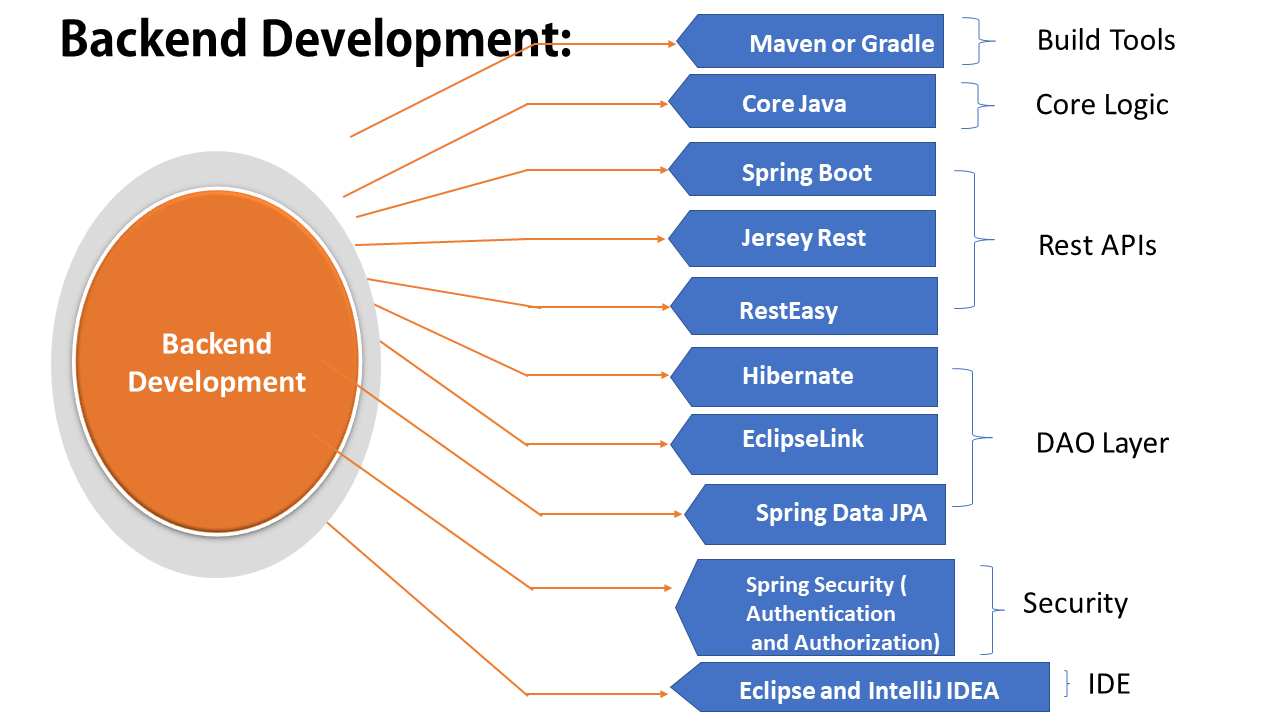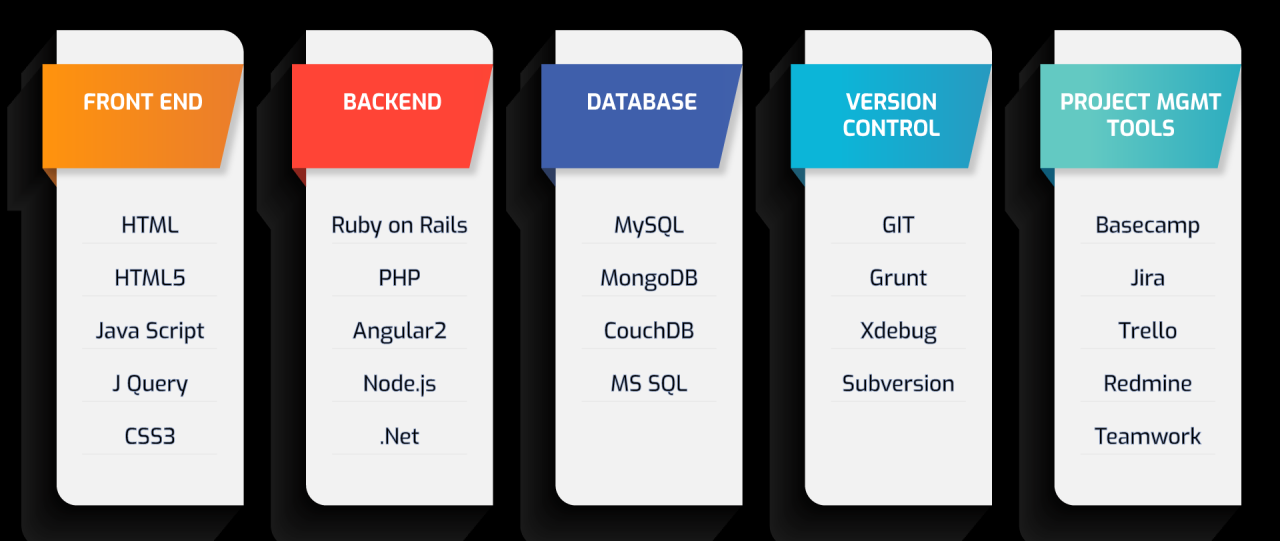Full stack developer career path and required skills encompass a broad range of technical and soft skills. This journey involves mastering both front-end and back-end development, bridging the gap between user interface and server-side logic. We’ll explore the evolution of this role, common career progressions, and the essential skills needed to succeed, from mastering HTML, CSS, and JavaScript to understanding databases and APIs.
We’ll also delve into crucial soft skills, portfolio building, and effective job search strategies, equipping you with the knowledge to navigate this exciting and in-demand field.
The path to becoming a successful full-stack developer is not a sprint, but a marathon requiring consistent learning and adaptation. Understanding the nuances of different technologies, frameworks, and methodologies is vital. This guide will provide a roadmap to help you chart your course, focusing on the key areas that will make you a competitive and sought-after professional in the tech industry.
The Full Stack Developer Career Path
The full-stack developer role has evolved significantly since its inception. Initially, it often referred to developers with a broad understanding of both front-end and back-end technologies, capable of handling most aspects of a project. Today, the role is more nuanced, with specialists focusing on specific areas within the full-stack spectrum. This evolution reflects the increasing complexity of web applications and the demand for specialized expertise.
Full Stack Developer Career Progression
A typical career path for a full-stack developer often starts with an entry-level position as a junior developer. With experience and skill development, one can progress to a mid-level, then senior full-stack developer role. Further advancement could lead to team lead, tech lead, or even architect positions, depending on the individual’s ambition and skills.
Full Stack Specializations
While the term “full-stack” implies broad knowledge, developers often gravitate towards specific areas of expertise. Some may focus heavily on front-end development, mastering intricate UI/UX design and advanced JavaScript frameworks. Others may specialize in back-end development, delving into database optimization, server-side logic, and API design. A balanced approach, however, remains highly valuable.
Average Salary Range for Full-Stack Developers
| Experience Level | Salary Range (USD) |
|---|---|
| Junior (0-2 years) | $60,000 – $80,000 |
| Mid-Level (2-5 years) | $80,000 – $120,000 |
| Senior (5+ years) | $120,000 – $180,000+ |
Note: Salary ranges are approximate and can vary based on location, company size, and specific skills.
Essential Front-End Skills: Full Stack Developer Career Path And Required Skills
A strong foundation in front-end development is crucial for any full-stack developer. This involves a deep understanding of HTML, CSS, and JavaScript, along with proficiency in at least one popular front-end framework.
HTML, CSS, and JavaScript Fundamentals
HTML provides the structure of a webpage, CSS styles its appearance, and JavaScript adds interactivity and dynamic behavior. Mastery of these three languages is fundamental to creating engaging and functional web applications. Understanding semantic HTML and writing clean, maintainable CSS are essential skills.
Front-End Frameworks: React, Angular, Vue.js
Frameworks like React, Angular, and Vue.js significantly enhance front-end development efficiency. React, known for its component-based architecture, is popular for its flexibility and large community. Angular, a comprehensive framework, offers a structured approach to building complex applications. Vue.js is often praised for its ease of learning and gradual adoption capabilities. The choice of framework often depends on project requirements and team preference.
Building a Responsive Website
Building a responsive website involves using HTML, CSS, and a chosen framework to create a site that adapts seamlessly to different screen sizes. This typically involves using CSS media queries to adjust layout and styles based on device characteristics. Frameworks often provide built-in responsive features or utilities to simplify this process.
Designing a Simple User Interface (UI)
Designing a user interface involves creating a visually appealing and user-friendly interface. This involves considering factors such as color schemes, typography, layout, and user experience (UX) best practices. Frameworks often provide components and styling utilities to expedite UI design.
Core Back-End Skills
Back-end development focuses on the server-side logic, databases, and APIs that power web applications. Proficiency in a back-end language, database technologies, and API design is essential for a full-stack developer.
Popular Back-End Programming Languages, Full stack developer career path and required skills
Python, Node.js (JavaScript), Java, and PHP are among the most popular back-end languages. Python is known for its readability and extensive libraries. Node.js allows for using JavaScript on both the front-end and back-end. Java is known for its robustness and scalability, while PHP remains a widely used language for web development.
Database Technologies: SQL vs. NoSQL
SQL databases (like MySQL, PostgreSQL) are relational databases that organize data into tables with rows and columns. NoSQL databases (like MongoDB, Cassandra) are non-relational and offer more flexibility for handling large volumes of unstructured data. The choice between SQL and NoSQL depends on the specific application needs.
APIs and Their Role in Full-Stack Development
APIs (Application Programming Interfaces) are crucial for communication between the front-end and back-end. They define how different parts of an application interact with each other, enabling data exchange and functionality. RESTful APIs, based on HTTP methods, are a common standard for web applications.
Building a Simple RESTful API
Building a RESTful API involves defining endpoints, handling HTTP requests (GET, POST, PUT, DELETE), and returning data in a structured format (like JSON). This typically involves using a back-end framework or library that simplifies API development.
So you’re thinking about a full-stack developer career path? It’s a challenging but rewarding journey requiring skills in both front-end and back-end development. But hey, even developers need breaks! If you’re planning a podcast, check out this guide on finding the right AI voice generator for podcasting to make production smoother. Then, get back to mastering those JavaScript frameworks and database management systems – your full-stack journey awaits!
Version Control and DevOps Practices
Effective version control and DevOps practices are essential for collaborative development and efficient deployment.
Git for Version Control
Git is the industry-standard version control system. Best practices include regularly committing changes, writing clear commit messages, branching effectively, and using pull requests for code review.
Continuous Integration and Continuous Delivery (CI/CD)
CI/CD pipelines automate the process of building, testing, and deploying code. This ensures faster release cycles and reduces the risk of errors during deployment.
Containerization with Docker and Kubernetes
Docker allows packaging applications and their dependencies into containers, ensuring consistent execution across different environments. Kubernetes is an orchestration platform for managing and scaling Docker containers.
Deploying a Simple Application with CI/CD

A typical CI/CD pipeline might involve automated testing, building a Docker image, pushing the image to a container registry, and deploying it to a cloud platform (like AWS, Google Cloud, or Azure) using tools like Jenkins, GitLab CI, or GitHub Actions.
Essential Soft Skills and Professional Development

Technical skills are essential, but soft skills and continuous learning are equally crucial for success as a full-stack developer.
So you want to be a full-stack developer? That means mastering front-end and back-end skills, which takes dedication! It’s a challenging but rewarding path, and just like Gloria Hunniford’s health scare highlighted in Loose Women’s Gloria Hunniford shares how stark doctor’s warning , prioritizing your well-being alongside your career is crucial. Remember to build a solid foundation in languages like JavaScript, Python, and SQL for a successful full-stack career.
Importance of Communication, Teamwork, and Problem-Solving
Effective communication is vital for collaborating with team members and clients. Problem-solving skills are crucial for troubleshooting bugs and finding efficient solutions. Teamwork is essential in a collaborative development environment.
Building a Professional Network
Attending industry events, joining online communities, and networking with other developers are effective ways to build a professional network.
Strategies for Continuous Learning
Staying updated with industry trends requires continuous learning. This can be achieved through online courses, reading technical articles, attending workshops, and contributing to open-source projects.
Resources for Professional Development
- Books: “You Don’t Know JS” series, “Clean Code,” “Design Patterns: Elements of Reusable Object-Oriented Software”
- Online Courses: Coursera, Udemy, freeCodeCamp
- Communities: Stack Overflow, Reddit (r/programming), GitHub
Building a Full Stack Portfolio
A strong portfolio is essential for showcasing your skills and landing a job. It should demonstrate a range of projects and highlight your abilities.
Portfolio Project Planning
Plan projects that demonstrate different aspects of full-stack development, including front-end design, back-end logic, database interactions, and API integrations.
Examples of Effective Portfolio Projects
Examples include e-commerce applications, social media platforms, blog systems, or task management tools.
Documenting Project Details and Code
Thoroughly document your projects, including design choices, technologies used, and code explanations. This demonstrates your attention to detail and professionalism.
Strong Portfolio Descriptions
A full-stack web application built using React, Node.js, and PostgreSQL. The application features a user-friendly interface, robust back-end logic, and a secure authentication system. The project showcases my skills in responsive design, API development, and database management.
Developed a RESTful API using Python and Flask to manage a library database. The API provides endpoints for adding, updating, and retrieving book information. The project demonstrates my proficiency in API design, database interactions, and Python programming.
Job Search Strategies

Finding a full-stack developer job requires a strategic approach.
Key Resources for Finding Jobs
Job boards (Indeed, LinkedIn, Glassdoor), networking events, and company websites are valuable resources for finding job openings.
Writing a Compelling Resume and Cover Letter
A resume should highlight relevant skills and experience. A cover letter should demonstrate your understanding of the company and the role.
The Full-Stack Developer Interview Process
The interview process typically includes technical assessments, coding challenges, and behavioral interviews to evaluate technical skills and cultural fit.
Tips for Successfully Navigating Technical Interviews

Practice coding challenges, prepare for technical questions about data structures and algorithms, and showcase your problem-solving abilities.
Want a full stack developer career? You’ll need skills in front-end (like React) and back-end (like Node.js) technologies, plus database management. It’s a demanding but rewarding path; while you’re mastering those skills, you might see headlines like this one, reporting on political events such as Republican Mike Johnson reelected House speaker after dramatic negotiations. But focusing on your coding skills will help you build a successful career, regardless of the daily news cycle.
Ending Remarks
Becoming a full-stack developer is a rewarding journey that demands dedication and continuous learning. By mastering both front-end and back-end technologies, along with honing essential soft skills, you’ll position yourself for a successful and fulfilling career. Remember to build a strong portfolio showcasing your skills and actively network within the tech community. The demand for skilled full-stack developers is consistently high, and with the right preparation and perseverance, you can achieve your goals in this dynamic and ever-evolving field.
Key Questions Answered
What’s the difference between a front-end and back-end developer?
Front-end developers focus on the user interface (what users see and interact with), while back-end developers handle server-side logic, databases, and APIs.
How long does it take to become a full-stack developer?
It varies greatly depending on prior experience and learning pace. Expect anywhere from 6 months to several years of dedicated study and practice.
Which programming language should I learn first?
There’s no single “best” language. JavaScript is crucial for front-end, while Python, Node.js, Java, or PHP are popular back-end choices. Choose one and build a strong foundation before branching out.
Are coding bootcamps worth it?
Bootcamps offer intensive training but can be expensive. Consider your learning style, budget, and career goals before enrolling.
